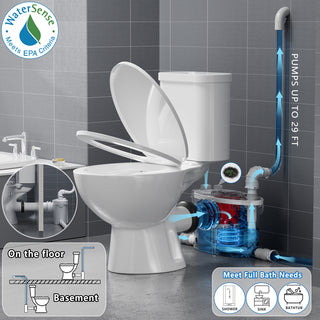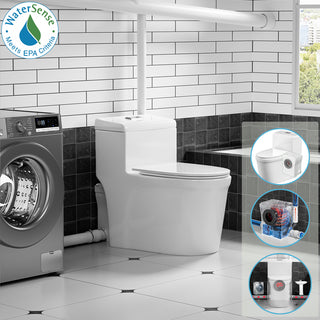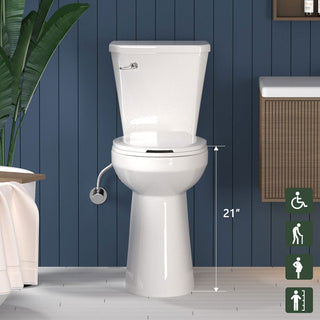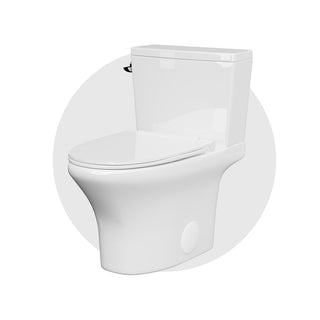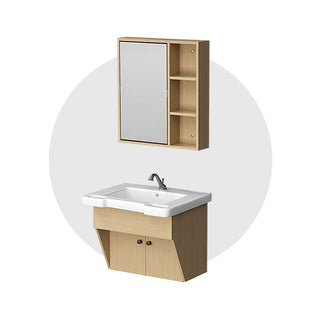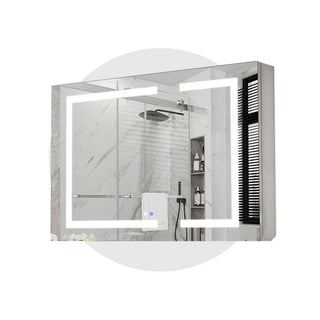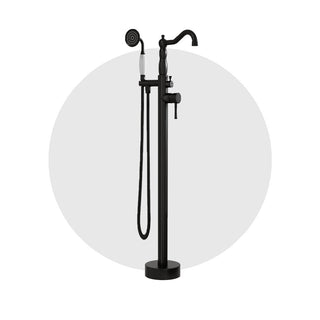The toilet tank is often overlooked, accumulating mineral deposits, mold, bacteria, and other grime over time. However, regular cleaning is essential to maintain efficient flushing, water quality, and overall toilet function. This guide will show you how to clean your toilet tank effectively with professional methods and long-term maintenance tips.
-
Why Clean the Toilet Tank?

- Prevent Mineral Build-Up:Over time, minerals from hard water can accumulate inside the tank, which could clog pipes, cause corrosion, or reduce flushing efficiency.
- Reduce Mold and Mildew Growth:Toilets are often exposed to moisture, making them prone to mold and mildew, especially in the tank area. Cleaning prevents these growths from spreading.
- Improve Toilet Efficiency:A clean tank helps ensure that the flushing mechanism works smoothly, which can prevent unnecessary water wastage and costly repairs.
- Aesthetic and Hygiene Benefits: Regular cleaning helps maintain a fresh and odor-free bathroom environment, making the toilet more pleasant to use.
-
How to Clean Your Toilet Tank: Step-by-Step Guide
-
Gather Your Cleaning Supplies

Before you begin, you’ll need the following supplies:
Toilet cleaner (preferably one with disinfecting properties)
White vinegar or a descaling product
A toilet brush with stiff bristles
A soft sponge or cloth
Rubber gloves (optional)
A bucket or large container
- Turn Off the Water Supply
Start by turning off the water supply to the toilet. This will prevent the tank from refilling with water while you're cleaning. You’ll find the shut-off valve near the floor behind your toilet. Once the water is off, flush the toilet to drain most of the water out of the tank.
- Inspect the Tank
Take a close look at the interior of the tank. Check for mineral buildup, mold, and any visible debris. This will give you an idea of what kind of cleaning products you’ll need.
- Clean the Walls and Mechanism
Using a toilet brush, scrub the inside walls of the tank. Pay special attention to areas where mineral deposits may have formed, especially around the bottom and near the flushing mechanism. For hard water stains, soak a sponge or cloth in white vinegar and apply it to the affected areas, letting it sit for at least 30 minutes before scrubbing. If you’re dealing with heavy deposits, consider using a descaling product designed specifically for toilet tanks.
- Clean the Flush Valve and Ballcock
The flush valve (also known as the flapper) and ballcock (the fill valve) are essential components of your toilet’s flushing system. These parts can develop grime and mineral buildup, which can interfere with your toilet’s flushing efficiency. Gently scrub these parts with a soft sponge to ensure they are free of debris. If you notice any parts that are worn or damaged, now is the time to replace them.
- Disinfect
Once the tank is scrubbed and free of mineral buildup, it’s time to disinfect. Use a disinfecting toilet cleaner to wipe down all surfaces inside the tank. You can also use a vinegar solution to sanitize the area. Let the cleaner sit for about 10 minutes before giving everything a final rinse with clean water.
- Turn the Water Supply Back On
Once the tank is clean and dry, turn the water supply back on and flush the toilet several times to ensure everything is functioning properly. If the flush isn’t as strong as it should be, check to ensure that the flush valve is seated properly and that the water supply is adequate.
- Regular Maintenance
To maintain a clean toilet tank, it’s important to perform regular cleaning at least every 6 months. You can also add a toilet tank cleaner tablet to the tank to help prevent mineral buildup. Make sure to follow the manufacturer’s guidelines for these products to avoid damaging your toilet’s components.
-
New Innovations in Toilet Tank Care
While the traditional cleaning methods mentioned above are effective, there are a few new innovations in toilet tank care that can make cleaning easier and more efficient:
Self-Cleaning Toilets: Some modern toilets come with a self-cleaning function that helps reduce buildup inside the tank. These systems use a combination of chemical solutions and water pressure to clean and disinfect the tank with each flush.
Descaling Toilet Tablets: Toilet tank cleaning tablets are now available that not only help with regular maintenance but also break down mineral deposits and grime over time. These tablets are placed inside the tank and release cleaning agents each time you flush, keeping your toilet tank in tip-top shape.
Tank Liners: To make cleaning even easier, consider using a toilet tank liner that helps reduce buildup of mold, mildew, and mineral deposits. These liners are easy to install and remove, making tank cleaning a breeze.
Conclusion
Cleaning your toilet tank might not be the most glamorous household task, but it’s one that can save you time and money in the long run. A clean tank ensures that your toilet functions efficiently, prolongs the life of your toilet, and contributes to a cleaner, healthier bathroom environment. With these expert tips and a little bit of regular maintenance, you’ll keep your toilet tank in perfect working condition for years to come.
Remember, the key to a sparkling clean toilet tank is consistency. Set a schedule to clean your toilet tank regularly, and your toilet will thank you with smooth, efficient performance every time you flush.


